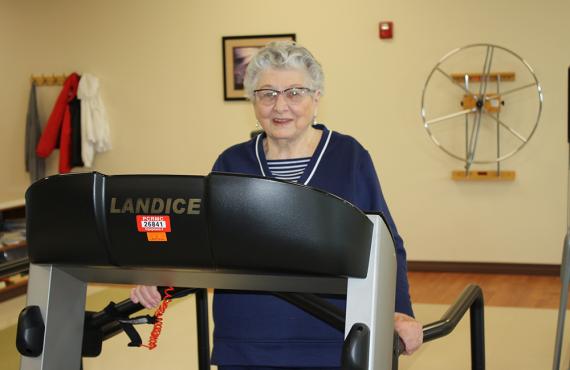Published on August 1, 2023

Read Time: 3 Minutes
Three Things to Know
- Osteoporosis is known as the “silent disease” because symptoms are usually not noticeable until a bone fracture occurs.
- Osteoporosis occurs when bones break down faster than they are rebuilt, leading to weak and brittle bones.
- Risk factors for osteoporosis include age, family history, inactive lifestyle, diet, smoking, and alcohol use.
By Rachel Feeler, NP-C
Phelps Health
You may have heard osteoporosis referred to as the “silent disease” because you usually don’t notice any symptoms until you break or fracture a bone.
Osteoporosis, which means “porous bone,” occurs when your bones break down significantly faster than new bone is formed.

This condition can lead to a major decrease in your overall bone mass, and weak and brittle bones.
If you suddenly break a bone, especially after a minor fall or accident that normally wouldn’t hurt you, this may be a sign you have the disease.
Osteoporosis can lead to the following:
- Loss of an inch or more of your height
- Lower back pain
- Changes in your natural posture (stooping or bending forward more)
As you age, your bones begin to break down faster than they can rebuild. While this change is a normal part of getting older, it puts you at risk for osteoporosis.
Other factors that increase your risk of osteoporosis include the following:
- Certain medications or diseases
- Inactive lifestyle
- Diet
- Current or previous history of smoking and/or alcohol use
- Being naturally thinner
- Older than 50
- Early menopause
- Family history of osteoporosis
If you have these risk factors, your healthcare provider may order a bone density scan. These scans use X-rays to measure the strength of your bones and the amount of calcium and other minerals in your bones.
The scan is quick and pain-free. You lie on a comfortable table, and the scanner passes over your body, measuring your bone density.
Depending on your results, you may be diagnosed with osteoporosis. This condition has four different stages, and each stage is measured by your bone density.
Osteoporosis typically develops slowly over many years. The disease progresses, depending on genetic and environmental factors.
While osteoporosis is not reversible, medication, a nutrient-rich diet (including calcium, protein and vitamin D) and weight-bearing exercises (like walking) can help prevent further bone loss and even rebuild bones.
Yogurt, cheese, dark leafy greens, beans, nuts and seeds have key nutrients to help improve bone health. To avoid raising your risk of osteoporosis, limit sugar, salt and phosphate additives (like canned and bottled drinks and most processed foods)
In addition, if you have osteoporosis, avoid activities that increase your risk of falls, like walking on uneven ground. You also may want to limit movements that twist your spine, like swinging a golf club, or movements that significantly bend your spine, such as sit-ups and toe touches.
Guard against the silent threat of osteoporosis, and don’t wait until symptoms appear. Talk to your primary care provider to see if screening is right for you.
Learn More About Osteoporosis
Rachel Feeler, NP-C is a certified nurse practitioner who specializes in internal medicine at Phelps Health. To learn more, call (573) 364-8822.

